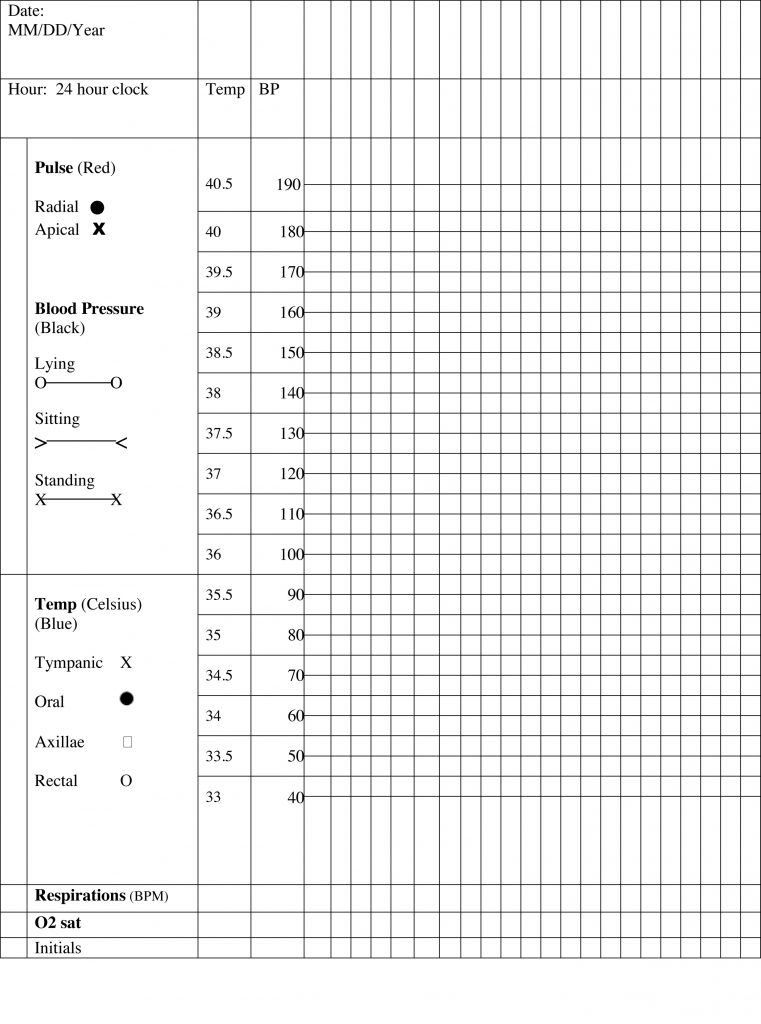Chapter 6: Knowledge Integration
Case Study 4: Older Adult Client (continued)
Vital Sign Measurements
1050 hrs, September 7, 2018
- Sitting BP: 160/94 mm Hg right arm
- Pulse: 72 bpm (radial), 2+, regular rhythm
1. Which findings are considered abnormal for this adult client? What medical terminology is used to define/label these findings?
- The blood pressure is elevated: hypertension (without diagnosis).
2. What factors might cause the blood pressure reading to be higher than normal in this adult client?
- Operator error
- Anxiety, stress, or pain
- Caffeine, smoking, or nicotine in the preceding 30 minutes
- Recently took adrenergic stimulants such as phenylephrine or pseudoephedrine
- Bladder and bowel discomfort
- Tight clothing on arm or forearm
- Noisy, cold room
- Taken immediately after activity
- Movement during the pressure reading
3. What are the healthcare provider’s next actions based on the findings of this older client?
- Retake the blood pressure to ensure accuracy
- Take blood pressure in the other arm
- Have client sit in a room by themselves and then do the following:
- ensure the room is quiet
- dim the lights
- allow the client to sit quietly for five minutes, without talking
- then take three measurements, a few minutes apart, with the automatic cuff (with an automatic cuff, the blood pressure documented is the average of the three readings).
After the healthcare provider followed the above procedures, the results were:
September 7, 2018
1058 hrs Sitting BP: 156/92 mm Hg right arm P 70 bpm (radial)
1100 hrs Sitting BP: 148/90 mm Hg left arm
Automatic Cuff
5 mins later (1105 hrs)
Sitting BP: 150/86 mm Hg right arm P 66 bpm
2 mins later (1107 hrs)
Sitting BP: 144/84 mm Hg right arm P 68 bpm
2 mins later (1109 hrs)
Sitting BP: 156/82 mm Hg right arm P 62 bpm
Vital Sign Record – Blank (pdf)


